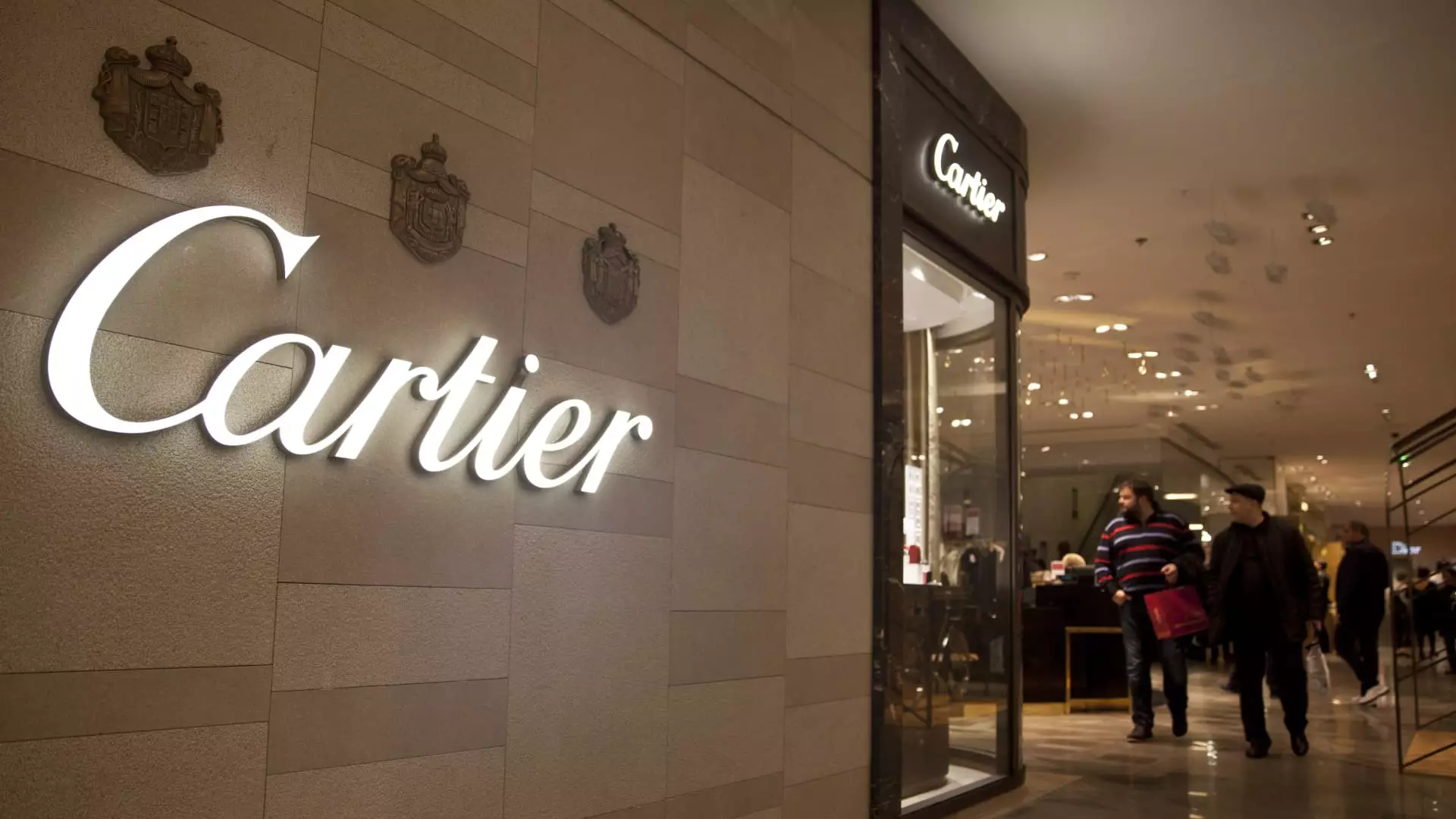Richemont, the owner of the renowned luxury brand Cartier, has recently showcased a significant rebound in its fiscal third-quarter sales, signaling a potential resurgence in the broader luxury market. This optimistic development cannot be seen in isolation; rather, it serves as a fascinating case study of how luxury brands are navigating post-pandemic challenges. With sales soaring to €6.2 billion ($6.38 billion) at constant exchange rates, Richemont has experienced a 10% increase in sales, dramatically outpacing the modest 1% growth anticipated by analysts. This remarkable performance was perceived as a resounding endorsement of Richemont’s strategy and resilience, leading to a staggering 17.15% surge in share prices shortly after the announcement.
Despite the encouraging sales figures, the company has not been without its struggles, particularly in the Asia Pacific region, where sales fell by 7%. This decline was primarily influenced by an 18% drop in sales within the mainland China, Hong Kong, and Macau markets, illustrating the ongoing challenges these areas face in bouncing back from the pandemic. Notably, China had previously served as a significant engine for luxury consumption, and its sluggish recovery continues to pose a challenge for brands attempting to maintain steady growth.
The positive market response to Richemont’s latest earnings report did not merely benefit the Swiss company. Stocks from other luxury giants such as Christian Dior, LVMH, and Hermes also saw gains, bolstering confidence in the luxury sector as a whole. This interconnectedness underscores the importance of consumer sentiment and financial performance among luxury brands, particularly during peak shopping seasons like the holiday period. Analysts view Richemont’s impressive turnaround as encouraging news for the overall health of Europe’s luxury market, suggesting that consumer spending may be regaining momentum across the continent.
Richemont’s performance marks an intriguing contrast to the company’s earlier difficulties, where it experienced a 1% decline in first-half sales attributed to challenging global economic conditions. The first six months saw sales of €10.1 billion, a figure that, while still substantial, indicated a need for a recalibration in the management approach and market strategies. Investors and market observers alike have speculated that the appointment of Nicolas Bos as CEO may be a turning point for the luxury house, reflecting a shift in leadership that aims to better respond to evolving consumer demands and market conditions.
Luca Solca, a respected analyst in the global luxury sector, pointed to Richemont’s quarterly results as an early signal that the broader luxury market might be on the mend. With growth noted across various market regions, excluding greater China, there are signs of recovery driven by domestic demand and increased tourist activity. Europe, in particular, is witnessing a robust revival as tourists flock back, contributing to improved sales figures. Similarly, the Americas continue to thrive on strong local consumption, pushing the narrative of growth within the luxury landscape.
The analysis of these market dynamics demonstrates that while Richemont has its foothold, the path to sustained growth will intersect with how well luxury brands can adapt to consumer sentiments and preferences shifting in the wake of the pandemic. The potential emergence from what Solca describes as a “trough” phase could be indicative of a stronger luxury sector moving forward, but this will require continued innovation and understanding of ongoing market shifts.
As Richemont continues to navigate these tumultuous waters, the key to its future success will lie in its ability to respond strategically to regional downturns, particularly in China, while leveraging growth opportunities in Europe and the Americas. With investor confidence bolstered by recent sales figures and a positive forecast for recovery, Richemont has the potential to emerge as a leading figure not just in luxury goods but as a beacon of hope for the industry at large. The next fiscal quarters will be telling, as the company seeks to solidify its ambitions and adapt to an ever-changing marketplace—one that is gradually learning to thrive in a post-pandemic world.

